The famous "goose paws" in the statements of historians appeared during the Roman Empire in the territory of the current Scotland. It is thanks to the Scottish politicians who began using this pattern in the 19th century to demonstrate their position, "goose paws" went into the masses.
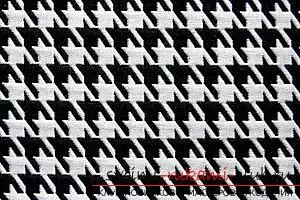
Currently, this ornament, really resembles the prints of goose paws, is so popular that it is used in the manufacture of absolutely different products in any technique. The classic was the print on a coat and costumes, "foot" are found in the design of dishes, interior items and much more.
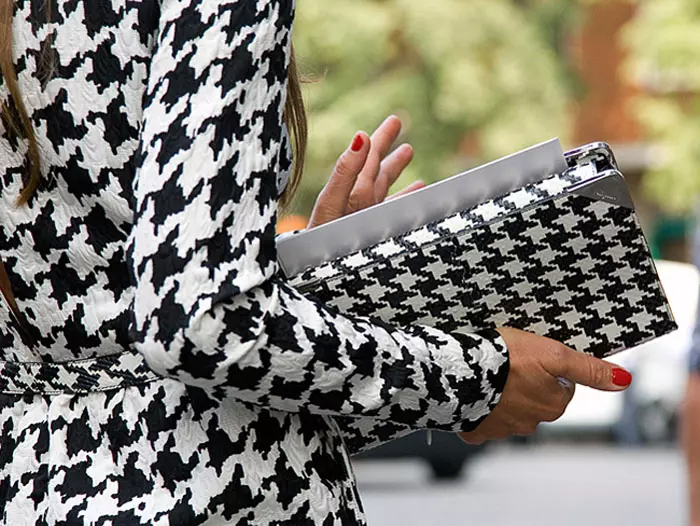
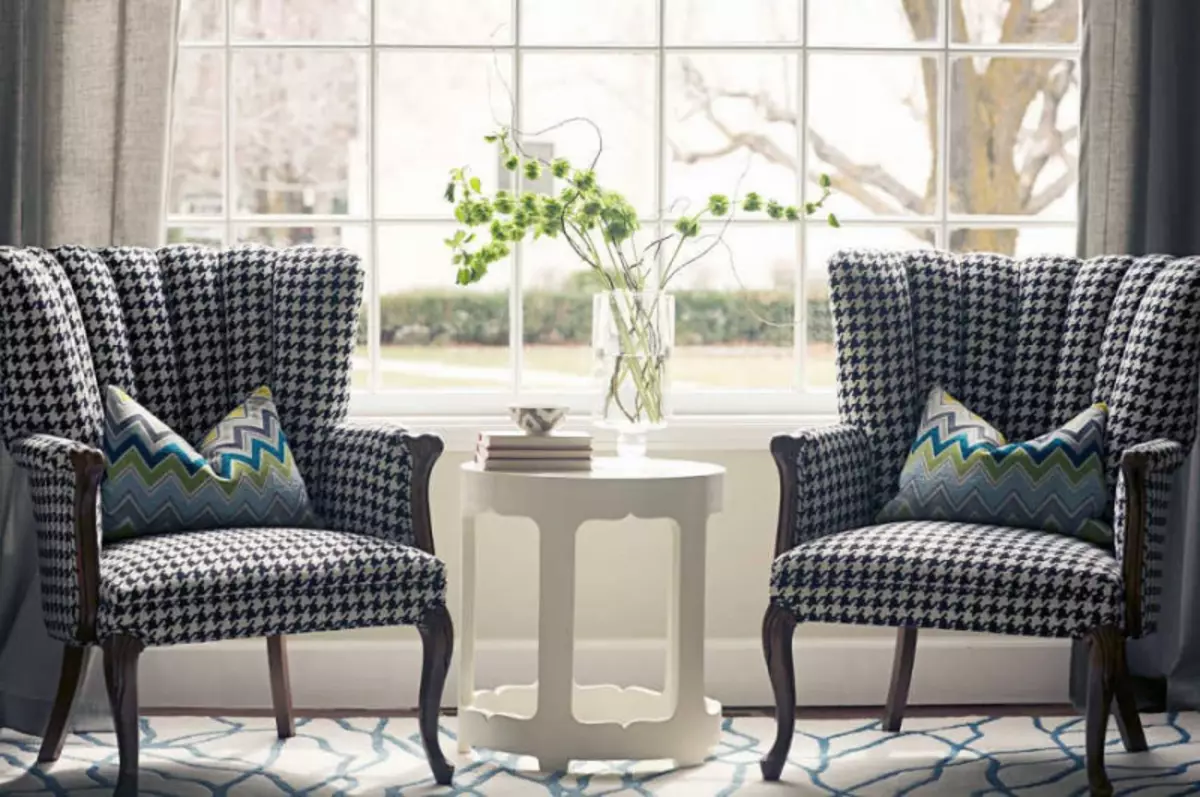
Despite the recognition of the pattern, it should be used carefully: he attracts attention to himself, which is combined only with monophonic things. Therefore, for example, when knitting, they are recommended to decorate only part of the product, and in the case of the use of equipment to create a jacket or caps, do not wear them with competing with "legs" clothes.
Basics of knitting
If you wish, reproduce the famous pattern of spokes. You can use the scheme below. Knitting technique is simple - all loops are facial, only their color changes.
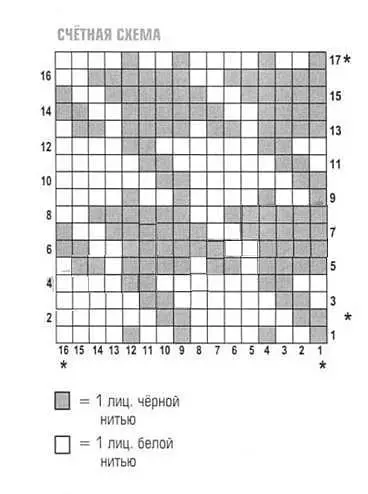
However, in the event that the master is more important for the pattern of the pattern, and not its color, there are several versions of knitting with knitting knitting, which mimic only their appearance. In this case, the volume of such a pattern creates the effect of the contrast of the original print, even if the yarn is used.
The rapport of a simple version of this pattern is four loops, as well as three additional for equilibrium, and four rows.
In the first row (involne) alternate three wrong and one facial. In the second, one inequate ties, then three of the same. Two irons knit, then three of the same in one. The row must end with one wrong loop. The third row begins with a facial closed behind the rear wall, follow two wrong. The loops alternate until the end of the row.
Article on the topic: Bandana, crochet: How to link on MK for beginners with schemes
In the fourth row, two hinges knit together for the front walls, then one facial, two together for the rear walls and one invented. From the fifth series, the rapport is repeated. Large transformation has undergone this pattern in crochet. Chess drawing in this technique has not been preserved, but the paws themselves look much more realistic.
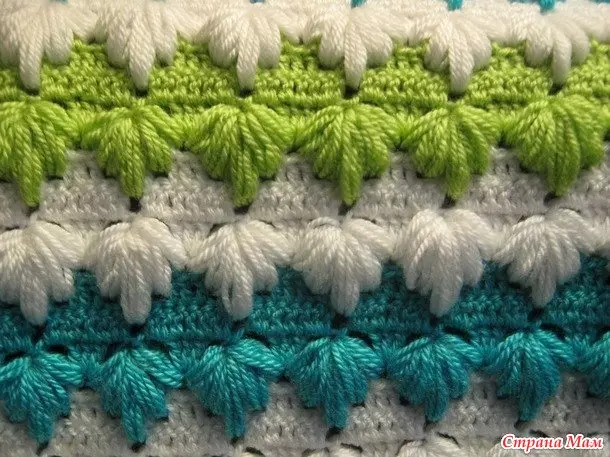
To create a simple version in this technique, the following description will suit. The rapport pattern is four loops, the base is a chain of air loops. The whole first row should be tied by columns without Nakid. The second begins with three lifting loops and stuck alternating three columns with an attachment and one air loop. It must be completed by four columns. The third row repeats the second. Then follows the contrast pattern to change the color of the thread.
The fourth row begins with three lifting loops and two columns with air loop between them. Then the elongated column with Nakuda. The alternation of these elements continues in a row, which is completed by two columns with Nakud. The fifth row begins with lifting loops, and then repeats the fourth in terms of the exception that instead of the elongated column fit the usual. Then the color of the yarn changes again.
In the sixth row after the rise alternate a column with an attachment, an elongated column with an attachment, another column with annet and an air loop. After that, the rapport is repeated.
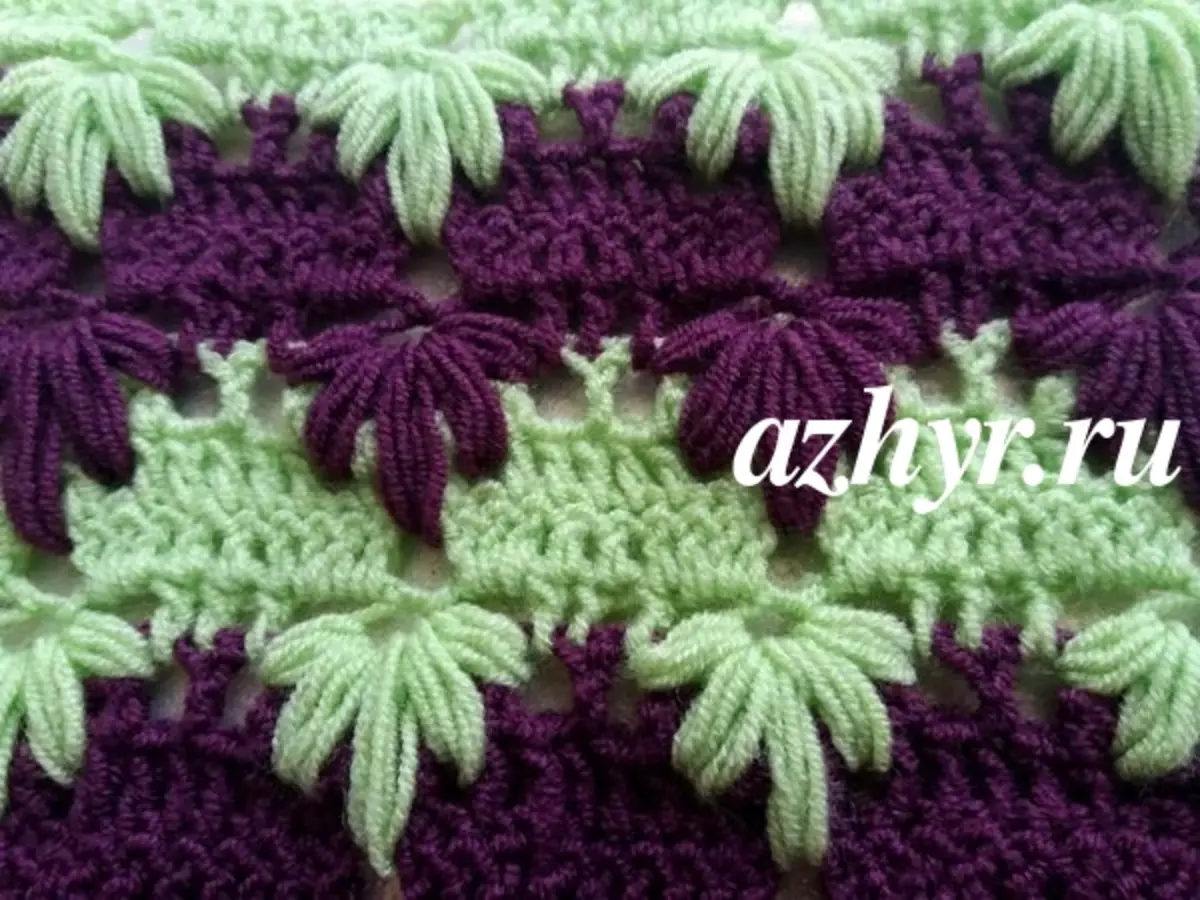
Products for home
Looks like a hook-knitted and pattern "goose paws", which turns out to weave the newspaper tubes. This technique is easy to create caskets, baskets, porridge, keystitch or any other products for home or garden. Due to the peculiarities of weaving from newspapers, such "legs" are obtained larger and more noticeable, therefore, as a rule, only used to decorate part of the product.Goose legs are easy to decorate a thing in which the elements of the terminal weaving and the rope are combined. So, they will sweep the blocks of several ropes, and the skew holes can be used for fastening them. For greater strength of the product before starting to decorate "goose legs" from the tubes, it is worth projected. Weaving technology is shown in this video:
Article on the topic: Swans Amigurumi. Crochet Knitting Schemes
To form a pattern, two tubes that are pre-kneaded are glued for any of the product risers under the part that will be fattened. The free end of the tubes should remain outside. After that, both pipes are settled for the neighboring riser over the fallen part, drill around it and output.
Then the tubes are again cutting into the product, but already for the adjacent riser and under the inclined part. It is not necessary to wear it, it is enough just to bring the vine on the other side. After that, the following riser is soaked in the same way and so on.
The size and volume of such goose paws depends on several factors: the number of tubes with which weaving are underway, the size of the inclined part, as well as the density of the sensing weaving - in one case, the tube can be linked to each other, forming even more volume, in each other to fall nearby.
